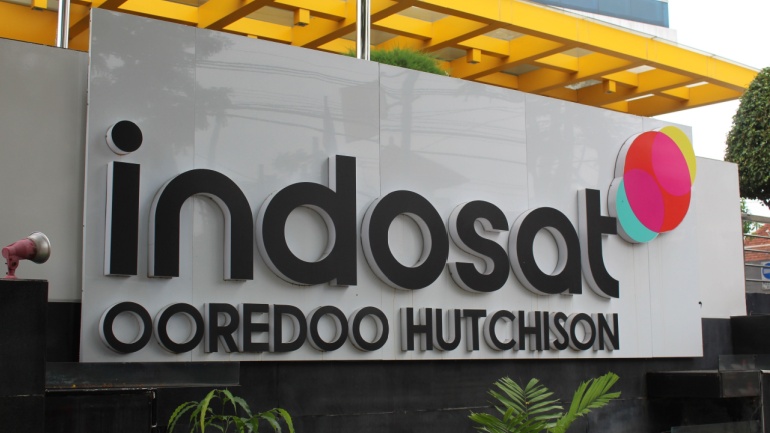In today’s interconnected world, voice calls remain a fundamental and essential aspect of communication. Within this realm of connectivity, the terms “origination” and “termination” hold significant importance, as they refer to different aspects of call routing. For those seeking to implement telephony systems, it is essential to understand the difference between origination and termination and possess some insight into the complex process of connecting voice calls.
In this article, we will delve into the fundamentals of origination and termination, exploring the key components of these processes, their significance, and their roles in facilitating seamless and efficient communication.
Defining Origination
Origination refers to the first step or starting point of a phone call. It is the process through which calls are initiated and transmitted from the calling party to the telecommunications network. The origination point is the device through which the call is initiated, and this may be a landline phone, a mobile device, a VoIP application, or any other communication endpoint. It is important to note that origination in a PSTN network relies on circuit-switched technology, where a dedicated communication path is established for the duration of the call. This is in contrast to Voice over Internet Protocol (VoIP) calls, where the voice data is packetized and sent over an IP network.
Components of Origination
To understand origination better, let’s explore its key processes:
User Initiation: The origination process begins when the calling party dials a phone number or uses a communication application to initiate a call. The originating device may be a landline or mobile phone, a VoIP-enabled phone, a softphone application on a computer or mobile device, or even a VoIP adapter connected to a traditional analog phone. This initiation action triggers the call setup process.
Local Exchange Switch (Central Office): For calls made using the traditional PSTN, the call is routed to a local exchange switch which is typically located near the caller’s premises. The local exchange switch identifies the originating line and serves as the point of entry into the PSTN network.
Call Signaling: Once the call is initiated, call signaling protocols, such as SS7 or Session Initiation Protocol (SIP), come into play. Call signaling is used to establish a connection between the calling party’s device and the network and carries information about the call, including the caller’s identity, the destination number, and other call-related features.
Codec Selection: For VoIP calls, codecs, or encoding/decoding algorithms, are utilized to compress and decompress voice data into packets for efficient transmission. Codecs help optimize bandwidth usage and ensure high-quality voice transmission over the IP network.
Transmission and Packetization (VoIP): Once the call is established, the voice data is transmitted from the origination point to the network infrastructure, where it is routed to the intended destination. For VoIP calls, voice data is packetized for transmission over the IP network.
Call Routing: The most appropriate path for a phone call to reach its destination must be determined. Call routing is a process whereby the dialed or destination phone number is analyzed, and routing databases are consulted to establish the best route for that specific call. The routing databases contain information about the network topology, destination codes, and rules necessary for making routing decisions. In addition, line disruptions or line quality problems are considered in real time when determining the appropriate call routing.
Quality of Service (QoS): For VoIP calls, quality of service mechanisms are generally implemented in VoIP origination protocols. These processes serve to maintain high-quality voice calls and ensure minimal delay, jitter and packet loss. QoS techniques such as packet prioritization, traffic shaping and bandwidth management are crucial in contributing to optimal call quality during origination.
Defining Termination
Call termination refers to the process of completing an incoming call and delivering that call to the intended recipient or terminating network. The termination point can be any endpoint device capable of receiving calls, such as a landline or mobile phone, or a VoIP application.
Components of Termination
Call termination includes the following processes:
Call Routing: Termination relies on call routing mechanisms within the telecommunications network to direct the call. These mechanisms identify the appropriate termination point based on the destination number. In addition, call routing algorithms analyze the dialed destination number and determine the most efficient path for the call to reach the intended recipient.
Network Infrastructure and Call Transmission: Voice data is transmitted by the network infrastructure to the termination point. This infrastructure may include routers, switches, gateways, and other network elements that are required for data transmission.
Call Signaling: Call signaling protocols establish the necessary communication links between the network and the termination point, facilitating call setup, call modification and termination. These protocols, such as Session Initiation Protocol (SIP) for VoIP, play a crucial role in termination by enabling the recipient’s device to receive the incoming call and preparing that device for the transmission of voice traffic.
User Notifications: Once the call reaches the termination point, users must be informed about relevant events or information related to that call. User notifications include the status, progress or specific conditions of the incoming call, such as initiating ringing or delivering call completion information.
Voice Communication: If the call is answered, the voice data is transmitted from the termination point to the recipient’s device, allowing a two-way communication channel to be established between the calling party and the recipient.
Codec Decoding: For VoIP calls being terminated at PSTN devices, the received voice data packets are decoded at the termination point using codecs (encoding/decoding algorithms) and converted back into audible voice signals. Codecs play a significant role in maintaining voice quality during the call termination process.
Quality of Service (QoS): Quality of Service mechanisms are implemented during VoIP termination to maintain a high call quality. QoS is important in prioritizing voice traffic, minimizing latency, jitter and packet loss, and ensuring a clear and reliable voice communication experience for both parties.
Factors to Consider when Selecting Origination and Termination Services
When purchasing voice origination or termination services, there are several important factors to consider in choosing reliable and high-quality providers. It should be noted that it is possible to procure both voice origination and termination services from the same provider. Many telecommunications providers offer a wide range of voice solutions that allow customers to benefit from streamlined management, integrated billing and potential cost savings. Additionally, working with a single provider can simplify technical support and troubleshooting processes, as there is a single point of contact for all voice-related requirements.
Here are some key aspects to be aware of when exploring origination and termination services:
Network Coverage and Reach: One of the primary considerations is the network coverage and reach of the voice origination/termination service provider. Ensure that the provider can offer coverage in the geographic areas where calls must be originated and terminated. Verify their interconnections with other carriers to guarantee that the selected provider can efficiently connect outgoing calls to diverse destinations.
Call Quality and Reliability: The quality and reliability of the voice origination/termination services are crucial for a seamless communication experience. Inquire about the service provider’s infrastructure, network capacity and call routing capabilities. Look for providers that have redundant systems, multiple interconnection points, and quality of service (QoS) measures in place to ensure excellent call quality and reliability.
Scalability and Capacity: Consider scalability options and evaluate whether the voice origination/termination service provider can accommodate future growth in communication requirements. Scalability is particularly important if significant business growth or seasonal fluctuations in call volume is anticipated. Assess the provider’s capacity to handle the specified call volume, especially during peak times.
Pricing and Cost Structure: Understand the pricing model and cost structure of the voice origination/termination services. Inquire about any setup fees, per-minute charges, additional fees for specific features or services, potential surcharges and billing increments. Evaluate the pricing in comparison to the quality and features provided.
Service Level Agreements (SLAs) and Support: Review the service level agreements (SLAs) offered by the voice origination/termination service provider. SLAs define the level of service that the customer can expect, including uptime guarantees, call completion rates, response times for support requests, and resolution times for any service disruptions. Ensure that the provider offers adequate technical support and can address any issues promptly to minimize disruptions to the voice services.
Number Porting, Support for Existing Numbers and Local Number Support: When considering origination services, ensure that the service provider supports number porting if there are existing phone numbers that must be retained. Number portability allows the transfer of existing phone numbers to the new provider, minimizing disruption to business operations. In addition, ensure that the service provider offers local number coverage in the specific regions in which phone numbers must be acquired.
Origination Call Routing Flexibility and Customization: For voice origination services, assess the level of flexibility and customization offered by the service provider in terms of call routing. Determine whether they provide options to customize call routing based on the time of day, location, or specific routing rules. This flexibility can help optimize call routing for cost efficiency or specific business requirements.
Compliance and Regulatory Requirements: Ensure that all voice services are legally compliant and meet industry standards. Verify that the voice origination/termination service provider adheres to necessary regulations, such as emergency service requirements, caller ID regulations, local phone number registration and lawful interception capabilities.
Integration and API Access: If integration with existing systems or applications is needed, inquire about the availability of APIs (Application Programming Interfaces) or other integration options. APIs can enable seamless integration of voice origination/termination services into a company’s existing infrastructure or applications, facilitating streamlined workflows and enhancing productivity.
Redundancy and Disaster Recovery: Inquire about the provider’s redundancy measures and disaster recovery capabilities. Robust redundancy ensures that the supplied voice services remain operational even in the event of network failures or outages. Ask about their backup systems, redundant routes, and disaster recovery plans to ensure minimal service disruptions.
Reputation and References: Research the reputation and track record of the voice origination/termination service provider. Examine reviews, testimonials, or references from existing customers to gauge their reliability, call completion rates, customer satisfaction and overall performance. Consider seeking recommendations from industry peers or consulting with telecommunications experts to gather insights.
Conclusion
Origination and termination services are integral parts of the call routing process in telecommunications. Voice origination is focused on the calling party. It is the process of initiating a phone call from the caller’s location and establishing a connection to the PSTN or a VoIP network. Voice termination is centered around the recipient and is the process of routing and delivering incoming voice calls from the originating network to the terminating network or the recipient’s phone line.
Both origination and termination services are crucial to the initiation, transmission and delivery of phone calls, and work together to enable effective voice communications between parties. Understanding these important concepts provides insights into the functional components of voice services, and how calls are completed and connected within the telecommunications network. This basic knowledge is essential when procuring, implementing and managing voice services.







